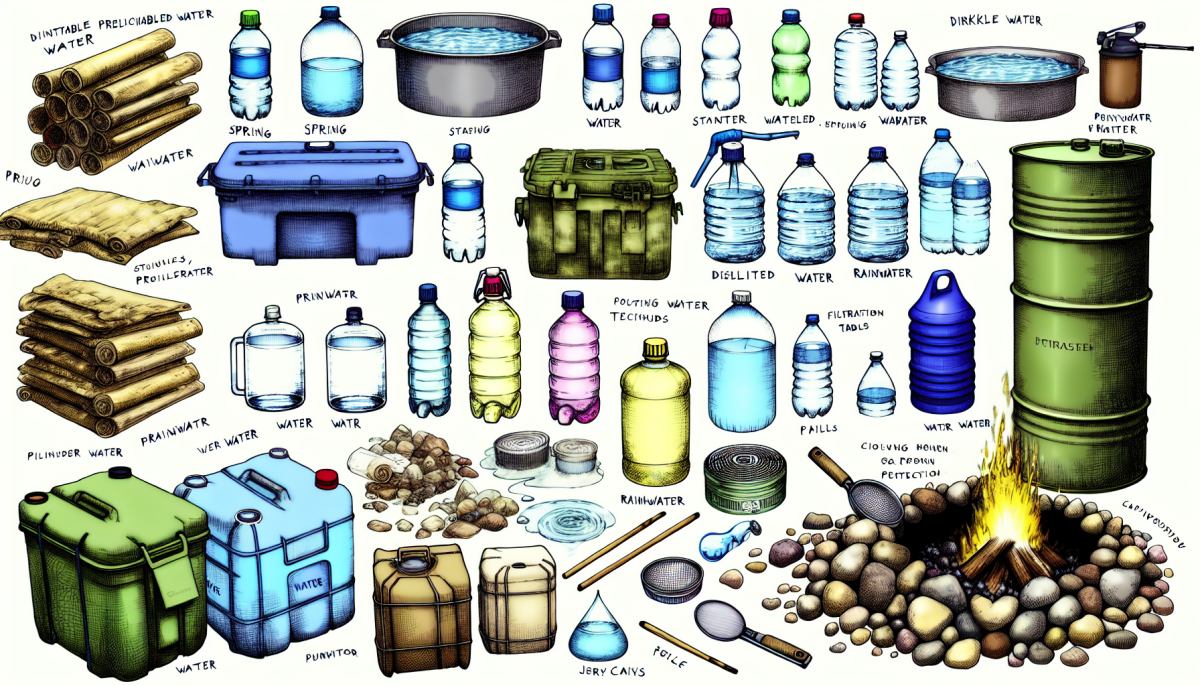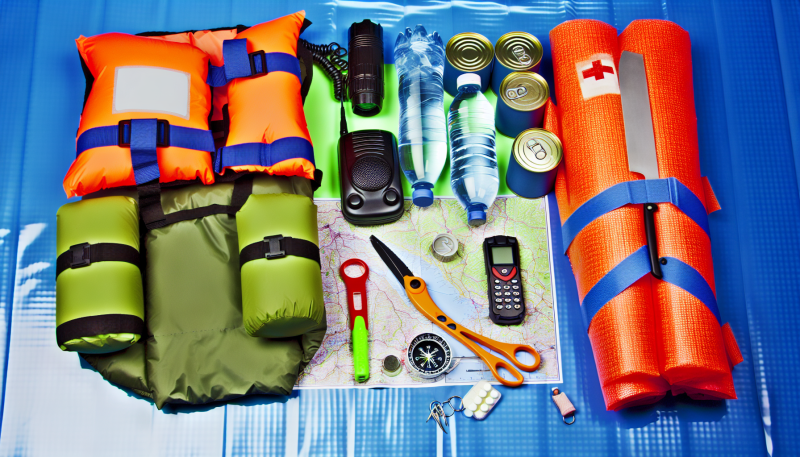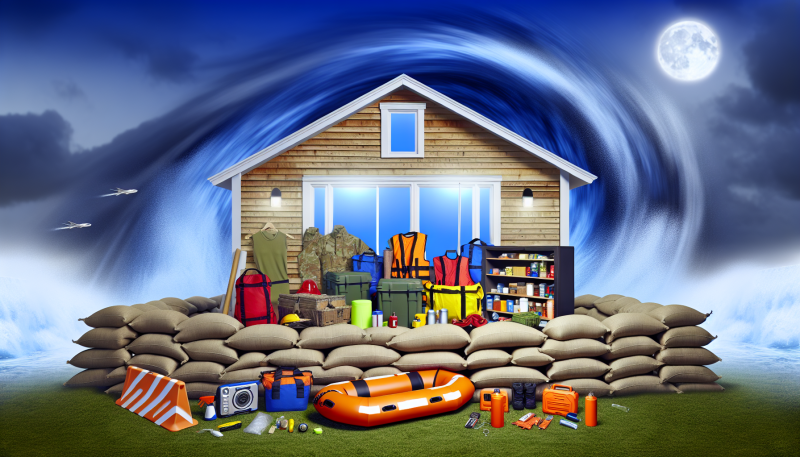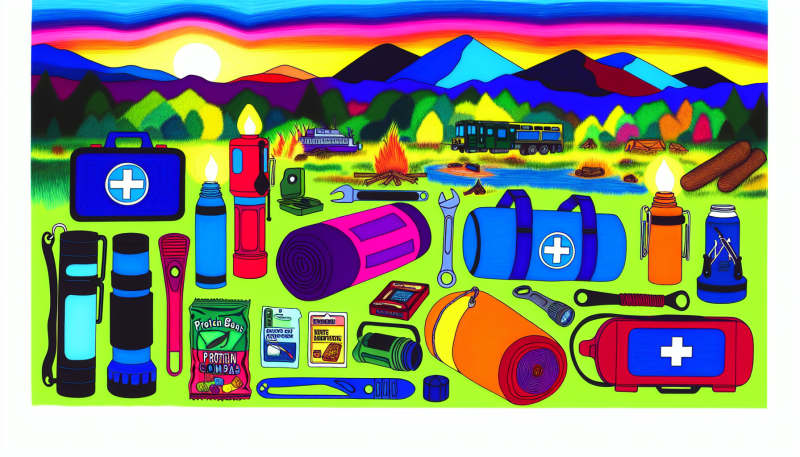When it comes to prepping, having a reliable water storage solution is essential. Whether you're preparing for natural disasters or simply want to ensure your family has enough clean water, choosing the right containers is key. Let's explore some of the best options available for storing water safely and efficiently.
One of the most popular choices for water storage is the 55-gallon plastic drum. These large containers are robust, long-lasting, and can store a significant amount of water. Many preppers favor food-grade plastic barrels that have been specifically designed for water storage, as they do not leach harmful chemicals. Additionally, they often come with a removable lid, making it easy to fill and maintain.
If you're looking for something smaller and easier to transport, consider collapsible water containers. These lightweight and flexible bags can hold anywhere from 5 to 10 gallons of water and can be easily stored when not in use. They are a great option for camping, hiking, or even just keeping in the car for emergencies. Just make sure to choose a BPA-free option to ensure your water stays safe to drink.
For those with limited space, water bricks are an innovative solution. These stackable containers are designed to hold 3.5 gallons of water each and can be neatly stored in tight spaces. They come with a durable design, making them a reliable choice for long-term storage. Additionally, their stackable nature means you can maximize your available space while still having access to fresh water when needed.
Lastly, don't forget about purification methods. Depending on your storage solution, you may want to invest in water purification tablets or a filtration system to ensure your stored water remains safe to drink. Always keep these in your prepper supplies, as they will be vital in maintaining water quality over time.
Safe Water Filtration Methods
When preparing for emergencies or uncertain situations, access to safe drinking water is a top priority. One effective way to ensure water safety is through filtration methods. There are several reliable filtration techniques that you can incorporate into your prepper supplies to provide clean, drinkable water.
One of the most popular methods is using a charcoal filter. Activated charcoal works by trapping impurities and contaminants, making it an excellent choice for filtering common pollutants. You can purchase portable charcoal filters or make your own with activated charcoal from a reliable source. Just remember to change the filter regularly to maintain its effectiveness.
Another great option is a ceramic filter. Ceramic filters contain tiny pores that can block bacteria and protozoa while allowing water to pass through. These filters are often durable and can be cleaned and reused multiple times, making them an eco-friendly choice. They are available in various sizes, from small, portable models to larger systems suitable for home use.
Lastly, UV water purifiers are a modern and efficient way to kill harmful microorganisms. By using ultraviolet light, these purifiers can eliminate up to 99.99% of viruses and bacteria in water. Portable UV devices are particularly handy for preppers on the move, ensuring you have an extra layer of safety when collecting water from uncertain sources.
Portable Water Purification Options
One popular choice is the water filter bottle. These bottles come equipped with built-in filters that can remove harmful bacteria, protozoa, and sediment from natural water sources. Brands like LifeStraw and Sawyer offer models that are lightweight and easy to carry on hikes or camping trips. Simply fill the bottle with water from a stream or pond, and drink through the filter. It's a quick and efficient way to ensure safe hydration.
Another effective option is portable water filters or pumps. These devices can filter larger quantities of water and are ideal for group situations. For example, a filter pump allows you to purify several liters of water at once, making it great for families. Many models can filter out viruses and bacteria, providing peace of mind when using potentially contaminated water sources.
Lastly, don't overlook the power of chemical treatments like chlorine dioxide tablets or iodine. These compact options are lightweight and can easily fit into any emergency kit. They work by killing pathogens in water, making it safe to drink. While they do require a waiting period before the water is ready, they are reliable and effective in situations where filtration might not be feasible.
Emergency Water Sourcing Tips
When preparing for emergencies, having a reliable water supply is essential. In unexpected situations, access to clean drinking water can become limited. Here are some practical tips for sourcing emergency water to ensure you and your family stay hydrated.
First and foremost, store water in sealed containers. Clean, food-grade plastic containers, like those used for beverages or juices, work best. Look for containers that are 5 gallons or smaller for better mobility. Be sure to label your containers with the date they were filled and rotate them out every six months to keep the water fresh.
If you find yourself without stored water, there are alternative sources you can tap into. Rainwater is an excellent option, so consider setting up a rainwater collection system using barrels. Just make sure to filter and purify the water before drinking. Additionally, nearby lakes, rivers, or ponds can be used as last resorts, but remember that this water will need proper purification through boiling, filtering, or using water purification tablets before it's safe to consume.
Lastly, keep in mind the importance of maintaining your water purification methods. Regularly check and replace filters in water purification systems. Consider having backup purification options like a portable water filter or chemical purification tablets. Being prepared with multiple ways to access clean water ensures you are ready for any situation.



